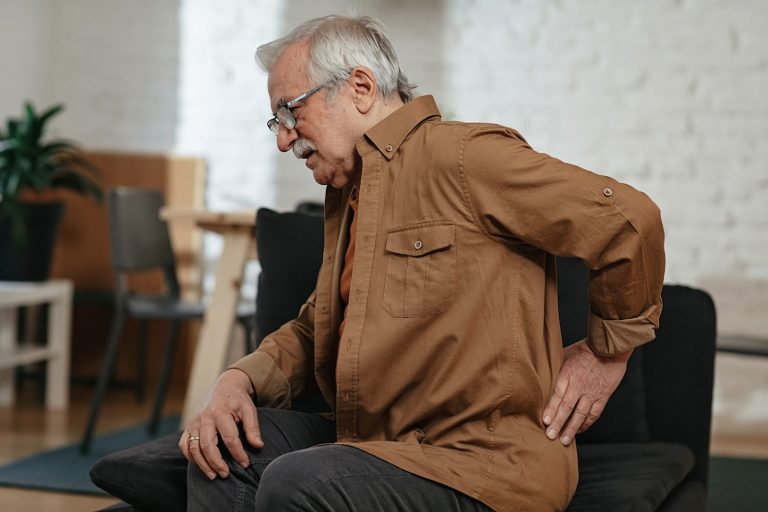Introduction To The Prevalence And Causes Of Back Pain
If you are among the millions of individuals worldwide who endure back pain, talking to a doctor is a common and imperative step to take as well as trying different tricks and tips to support your neck and back soreness or pain at home.
Back pain can stem from various sources; for example, structural abnormalities such as herniated discs, muscle strains, or ligament sprains due to poor posture or strenuous activities. Risk factors for developing back pain include age, sedentary lifestyle, obesity, genetic predisposition, psychological factors like stress and depression, smoking habits, and occupational hazards.
Different Types Of Back Pain
Back pain is a common complaint that we treat here at BEST, whether that is at our Cincinnati location or our Cleveland clinic. We often find that back pain can be caused by various factors, each resulting in different types of pain.
Muscular strain, a frequent cause of back pain, results from overuse or incorrect lifting techniques and usually causes localized discomfort or stiffness. Herniated discs occur when the soft cushion-like discs between the vertebrae bulge or rupture, leading to sharp shooting pains, numbness, or tingling sensations in the back and legs, to name a few different types of back pain that may impact you.
Whether you are struggling with tingling sensations, muscle weakness, or cramping it’s important to see a specialist and learn more about the type of back pain you are dealing with in order to better utilize a targeted approach tailored to address specific underlying causes.
Proper Posture and Ergonomics
Maintaining proper posture and practicing good ergonomics are crucial for individuals suffering from back pain. Maintaining proper posture alignment is essential to prevent strain on the muscles and ligaments that provide support to the spine. By sitting or standing in the correct position, the weight of the body is distributed evenly, reducing the risk of discomfort or injury and can help minimize neck and back soreness.
When sitting, it is crucial to keep both feet flat on the floor, knees bent at a right angle, and shoulders relaxed. The back of the chair should provide support to the natural curve of the spine, and additional lumbar support can be added if needed.
Consider arranging your desk at work to fit your needs, whether that means finding a new chair that suits your height and allows you to comfortably access it during activities like typing, zoom calls, or finishing up work.
Benefits Of Yoga And Pilates For Back Pain Relief
Yoga and Pilates have gained considerable attention within the healthcare community for their ability to provide back pain relief. These mind-body practices offer a plethora of benefits through a combination of deep stretching, strengthening exercises, and controlled breathing. Not only do they make you more flexible and help you balance better, but they also make your back, hips, and legs stronger.
Both disciplines, yoga and Pilates, improve posture and spinal alignment by targeting core muscles like abdominals and back extensors. In addition to increasing flexibility and promoting overall balance, these practices also enhance muscular strength in the back, hips, and legs.
The calming nature of yoga and Pilates also helps reduce stress levels, which play a significant role in exacerbating chronic pain conditions like lower back discomfort. Furthermore, these exercises facilitate an increased body awareness that allows individuals to identify and correct poor movement patterns that contribute to their back pain.
As such, many healthcare professionals advocate for integrating yoga or Pilates into treatment plans as they provide holistic approaches that not only relieve existing symptoms but also prevent future episodes of back pain.
Conservative Treatment And Minimally Invasive Surgery for Back Pain
Conservative treatment and minimally invasive surgery are two approaches commonly used to address back pain. Conservative treatment involves non-surgical methods such as physical therapy, medication, and lifestyle modifications to alleviate symptoms and promote healing. At BEST we focus on conservative treatment as the first mode of treatment.
This approach aims to avoid invasive procedures whenever possible. On the other hand, minimally invasive surgery is a less intrusive alternative that utilizes small incisions and advanced technology to treat specific spinal conditions, which we typically recommend for patients who have undergone multiple channels for conservative back pain treatment.
This type of procedure offers several advantages over traditional open surgeries, including reduced blood loss, shorter recovery time, and less post-operative pain. While conservative treatment is often the initial course of action for most patients, some cases may require surgical intervention when conservative options have proven ineffective or when the condition poses a significant risk to the patient’s long-term health. Your doctor at BEST will assess you to see if it’s appropriate for minimally invasive surgery.
Looking to get started with your back pain care? BEST can help. Reach out today to book an appointment and learn about what you can do to relieve your back pain.
